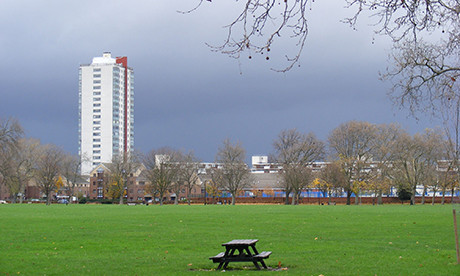Too tall for school: residents slam council’s ‘imposing’ tower proposals
Council proposals to build tower blocks in order to pay for new schools have been met with opposition from local residents.
Early plans for mixed developments in Hoxton and Hackney Downs were unveiled in a special pre-application planning sub-committee meeting last night.
The joint plans do not offer any provision for affordable housing or flats for social rent.
In Hoxton, the council proposes to build two high-rise towers reaching up to 22 storeys high, and a new school with 150 places aimed at ‘vulnerable’ pupils unable to participate in mainstream education.
Two towers reaching between 10 and 13 storeys high are also being proposed on Tiger Way on the site of the former Downsview School, south of the Nightingale Estate on Hackney Downs.
There, the private sale of 72 residential units would pay for a new two-form entry primary school with enough places to accommodate 420 pupils.
But residents have expressed fears over the height of the towers.
Adam Di Chiara has lived on Nightingale Estate’s Ross Court, directly behind the site, for nine years. He said: “If they put a thirteen storey block there it will be another hour till we get the sun in our back garden.”
“There are these lovely duplex apartments with a view of the park, but the school faces a road.”
Building up
On Hackney Downs, the proposed structures lie within a stone’s throw of Seaton Point tower, the only surviving structure out of the six high-rise blocks demolished by the council as part of the ongoing regeneration of Nightingale Estate.
Local residents are concerned it is a case of history repeating itself.
Alan Maddox, who lives 250 metres from the site on Queensdown Road said: “It is ironic that the council demolished tower blocks at this same location as recently as twelve years ago because they were socially and environmentally unacceptable.”
Di Chiara said: “When the last tower block came down on Nightingale Estate in 2003 there was some space left.
“For years and years we have been saying we want this developed on and we have come to this understanding that we do not want anything more than 4 or 5 storeys. Now all of a sudden the council is proposing a 13 storey tower next door.”
Garry Malcolm, Chair of the recently reformed Hackney Downs User Group also expressed concern at the impact of the height on the green space of Hackney Downs. He said: “The proposed development will have an impact on the ambience of the park because 13 storeys is significantly taller than the existing buildings.”
Cash for schools
The council argues that building the schools will address a £40 million pound shortfall in its Building Schools for the Future programme and help to meet the borough’s growing demand for more primary school places.
When pressed by council officers at the pre-application meeting about the proposals’ lack of affordable housing, developers mentioned the possibility of providing affordable units off-site.
The borough’s target rate of affordable housing on new developments is 50%, a rate the Living in Hackney Scrutiny Commission recently admitted it cannot meet in the majority of cases.
Sub-committee Chair Councillor Vincent Stops said not meeting the affordable housing policy targets would require “strong justification”. He added: “The justification cannot be that the Department for Education has no money.”
Mayor of Hackney Jules Pipe said that the mixed use model was using Hackney’s high land values “to the borough’s advantage.” He described the scheme as a “creative and ambitious approach.”
Mayor Pipe said: “The huge increase in property prices in London, and in our borough in particular, over the past few years is a massive barrier to people finding a home.
“However, we have the choice to let that defeat us, or where possible use those high land values to the borough’s advantage – building homes to sell privately to generate the funds that allow us to build the schools and homes for social rent that we need.
“This is a creative and ambitious approach to ensure our borough has the infrastructure it needs over the next decade”.

